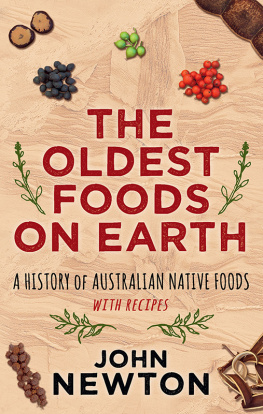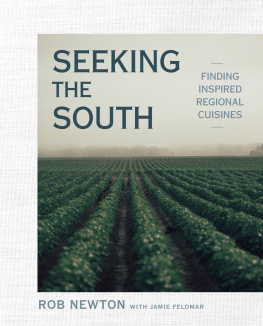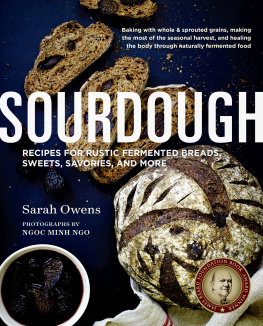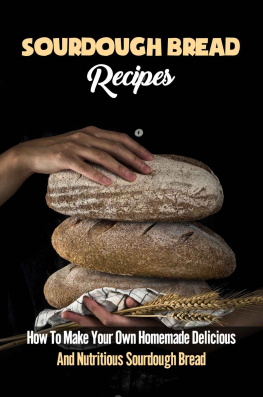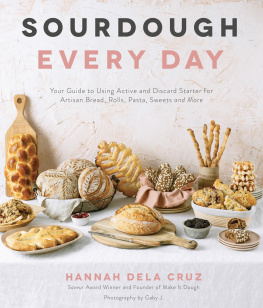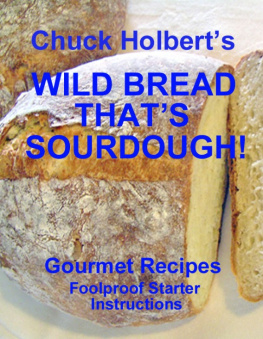FERMENTED
SOURDOUGH BREAD
Artisan Technique For Homemade Sourdough Bread Maker Recipe Kit For Rustic Fermented Breads, Sweets, Savories, Birote, Bagels, Pan De Coco, Beignets, And More With Tools For Making Sourdough Bread From Starter
By
Melissa L. Newton
Copyright 2020 Melissa L. Newton
All rights reserved. No part of this book shall be reproduced, stored in a retrieval system, or transmitted by any means, electronic, mechanical, photocopying, recording, or otherwise, without written permission from the publisher. Although every precaution has been taken in the preparation of this book, the publisher and author assume no responsibility for errors or omissions. Nor is any liability assumed for damages resulting from the use of the information contained herein.
LEGAL NOTICE:
This book is copyright protected and is only for personal use. This book should not be amended or distributed, sold, quote, or paraphrased without the consent of the author or publisher.
DISCLAIMER:
The information contained in this book is for educational purposes only. All efforts have been executed to present accurate, reliable, and up to date information. No warranties of any kind are implied. The contents from this book are derived from various sources. Please consult a licensed professional before attempting any techniques contained herein.
By reading this document, the reader agrees that under no circumstances is the author responsible for any losses, direct or indirect, which are incurred as a result of the information contained in this book including errors, omissions, and inaccuracy.
Table of Contents
INTRODUCTION
This is how people used to make bread and other baked goods rise before yeast tins or yeast containers are in local stores. Before this became available (around 1850), the "yeast bread" shape was to add a little "fermented dough" to the dough and allow it to rise over time.
Because the sourdough has been around for a long time, no one knows how it started. Most people think it started after someone mixed flour and water to prepare for baking and left the mixture for too long. After a while, they noticed that it began to expand. When they saw this happen and then baked it, they noticed that the bread was lighter and easier to eat.
Then people discovered that if they kept some of the dough not baked after going up, and mixed it with the next batch of bread, they would rise more quickly. This unleavened dough can also be divided to share with others, known as the start of the sourdough.
The starter is a mixture of flour and water containing yeast and bacteria needed to make the fermented dough. Feeding it with more flour and water (called "updating it") keeps the initiator active. This diet does several things:
Feed yeast and bacteria initially to keep them healthy.
Indent bacteria make slightly acidic, which inhibits mold and gives baked goods a flavor.
The quantities of flour and water used to enter can vary. I usually use equal amounts of flour and water, which makes its entry thin enough for pouring. I've also seen recipes that use equal weights of flour and water, which amounts to about two cups of flour per cup of water. While I'm sure any of the mixes can be used, the flour and water quantities in the recipe should be adjusted depending on the percentage used to refresh your entrees.
There are several ways to get the start of the sourdough:
If you know someone who already has something, you can ask some for it after updating. The advantage of this is that you have someone who has a leavened dough experience that can help you if you have any questions.
Many of these are beginners who have died for many years, and some claim to be the "grandchildren" of those used during the gold rush in California or Alaska!
You can create your player, as described in the next section.
CHAPTER ONE
WHAT IS SOURDOUGH
In short, sourdough is slow-fermenting bread.
It is unique because it does not require commercial yeast for height.
Instead, it is made from a live fermented culture, the start of the sourdough, which functions as a natural fermentation agent.
The sourdough is famous for its distinctive refreshing flavor, chewy texture, and crispy crust.
In terms of health, it dominates compared to supermarket bread. Natural acids and prolonged fermentation help break down gluten, making it more digestible and easier for the body to absorb. And it tastes so good!
ABOUT SOURDOUGH STARTER
Before you start, you'll need to start with the sourdough. In short: the beginning of the sourdough is a living culture made with flour and water.
Once combined, the mix begins to ferment and cultivates wild yeasts and bacteria naturally present within the mix. A small portion of this culture is used to make the bread dough rise.
But it doesn't stop there.
The prefix must be kept alive with regular feeding of flour and water to maintain its strength for maximum upward force.
How to feed your plate
Each baker has his way, and with practice, he will eventually develop his routine.
I pour part of it (about half) and then feed the rest of the jar with the same weight of flour and water. Beat well with the fork until smooth. Then let it sit at room temperature or in a warm place (ideally 75-80F) until it is active.
Note: I use this jar for the baking machine and love it.
When the startup ready to use?
The starter is ready to use when it bubbles and doubles in size.
This can take from 2 to 12 hours or more depending on the temperature (the hotter the better) and the condition of the operator. be patient!
Buoyancy test: If you are still not sure if you are ready to use a small drop, about 1 teaspoon, in a glass of water. Do this when the initiator is up to the walk before collapsing. If it floats up it is ready to use. If it sank, your front appetizer needs to be fed again.
Where to get a sandwich plate
All sourdough entrees are different.
It can be done from scratch, shop online, or if you're lucky, someone will share a part of their start with you.
Appetizers range from coarse to thin in texture and can be made from a wide variety of flour. I use two different beginners. One is homemade, the other is a gift from my friend Celia. She dried up part of her startup and mailed it from Sydney, Australia.
After nurturing the prefix and you are full of vitality and vigor, pour in the amount of jar you need to weigh or measure your recipe.
Then, don't forget to feed the rest of the jar with more flour and water so that the process continues.
Storage options
If you bake only a few times a month, keep snacks in the refrigerator and feed them once a week. If you're an avid baker, keep your snack at room temperature and feed it at least once a day.
What makes sourdough bread sour
Wild yeast is used to make sourdough bread with a strong and active sourdough culture made from wild yeast, you won't need any commercial yeast at all. Wild yeast needs more persuasion and works slightly slower than commercial yeast, so sourdough bread is generally mixed, shaped, and baked all day, or even multiple days. In addition to giving the wild yeast time to do its job, this long period of slow development helps savor the most sophisticated and subtle flavors of the final bread, far from those with a medium loaf of bread.



